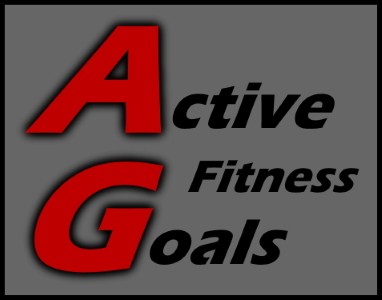What is the macros diet?
The macros diet is where, instead of only counting calories, you are also counting the individual macro nutrients that the body requires.
The amount of each macro nutrient you require will vary depending on the amount of calories you burn when resting, your activity levels and your goals.
As long as you eat the correct amount of each of the macro nutrients then you are going to progress towards your goal regardless of which goal that is.
Think of them like ingredients for a recipe or materials needed in a factory.
Why it works.
Firstly, using the macros diet is superior to only counting calories because it provides your body with all three of the macro nutrients it requires. The quantities required of each are calculated according to your activity levels and the goal you want to achieve.
Although only counting calories will likely result in some weight loss, it does not provide your body with the optimum levels of nutrition. Someone may stick to eating 1500 calories a day, but if these calories all come from fats then the body is not receiving the right amount of fuel (carbs) or the best material to repair itself (protein).
It’s versatile, as it allows you to amend the quantities of each macro nutrient required according to your goal. If you want to build muscle, then you can increase protein and overall calories. If you want to lose weight, then you can reduce overall calories.
For weight loss specifically, it follows the same principal as any other successful diet. Which is to reduce the overall amount of calories you consume. So you burn more calories than you eat.
It’s flexible and fits into your personal life. You can still eat out or eat at a friend’s house without having to worry about ruining your diet. If you have a meal out which is higher in calories, you can cut down your portions at other meal times during the day.
Similar to the above, you can also still eat some of your favourite foods. All you have to do is make sure you don’t consume too much of them and that you balance this by reducing some macros on other meals. You’ll be much more likely to stick to it without so many restrictions.
What are the 3 macros?
Protein – Is the nutrient required by your body to grow and to repair cells. Everyone will require a key amount of protein for normal bodily functions however people looking to build muscle will require more. It is the building block of the human body. Protein gets broken down into amino acids during digestion. There are 9 types of amino acids which are essential for humans to consume in their diets. More on this later.
Each gram contains 4 calories.
Carbohydrates – Are the nutrients required by your body for energy. They are the body’s fuel. The amount of carbohydrates required will depend on the amount of energy you burn each day, in other words your activity levels. It is important to understand that different carbohydrates digest and release fuel into the body at different speeds. More on this later.
Each gram contains 4 calories.
Fats – Can be used as energy by your body, however are mostly required to help you digest certain vitamins and are also used to protect your vital organs. It is also virtually impossible to consume animal proteins without also consuming fats.
Each gram contains 9 calories.

How to calculate your calorie requirements.
To start with you need to work out your basal metabolic rate (BMR). This is the number of calories you body will burn in a day at rest. This does not take into account your daily activity levels. This will come in later.
To do this you need to use the following Harris-Benedict equation:
Imperial:
Men = 66 + (6.2 × weight in pounds) + (12.7 × height in inches) – (6.76 × age in years)
Women = 655.1 + (4.35 × weight in pounds) + (4.7 × height in inches) – (4.7 × age in years)
Metric:
Men = 66.5 + (13.75 × weight in kg) + (5.003 × height in cm) – (6.755 × age in years)
Women = 655.1 + (9.563 × weight in kg) + (1.850 × height in cm) – (4.676 × age in years)
Next, to estimate the calories you burn each day including your activity, you need to work out your total energy expenditure (TEE).
Take your BMR from above and multiply it by one of the following depending on how active you are:
Inactive = 1.4
Lightly active, office worker, little to some exercise = 1.53
Moderately active, physical job like construction worker or running 1hr per day = 1.76
Very active, very physical job, athlete level exercise (2 hours per day) = 2.25
It is important not to overestimate your activity level or your calories will be too high. Most people will be below Moderately active.
Example:
30 years old, 6ft, 14 stone, lightly active male.
6ft = 72 inches
14 stone = 196 pounds
BMR = 66 + (6.2 × 196) + (12.7 × 72) – (6.76 × 30)
BMR = 66 + 1215.2 + 914.4 – 202.8
BMR = 1992.8 calories
TEE = 1992.8 x 1.53 = 3,049 calories
Losing weight
To lose weight, you are going to need to reduce your calories by 500 to 750 lower than your TEE. This will allow you to lose between 1lb and 1.5lbs per week.
Protein – 0.8g per lb of bodyweight x 4 for calories.
Fat – 25%.
Carbs – the remainder.
Maintaining
To maintain, use the TEE that you calculated.
Protein – 0.4g per lb of bodyweight if sedentary, increase up to 0.8g per lb if very active.
Fat – 25%.
Carbs – the remainder.
Building muscle
To build muscle, add approx. 500 calories to your TEE.
Protein – At least 1g per lb of bodyweight x 4 for calories.
Fat – 25%.
Carbs – the remainder.
Example:
The 196-pound male from the previous example wants to lose weight.
He would reduce 500 calories from his TEE = 3,049 – 500 = 2,549.
Protein at 0.8g per lb of bodyweight = 157g.
Multiply the grams of protein above by 4 to give you number of calories = 157 x 4 = 628 calories.
Fat at 25% = 2,549 x 25% = 697 calories
Carbs as the remainder = 2,549 – 628 – 697 = 1,224 calories.
You will likely find it easier to track your food in grams. To do this, divide the calories for each macro by the following:
Protein – 4
Fats – 9
Carbs – 4
If you are looking to lose weight or gain muscle, your weight is going to change over time. You will need to recalculate your BMR, TEE and macros on a regular basis to take this into account. Once a month should be enough.
IIFMM – If it fits my macros
This is the idea that people using this method can eat anything they like if it fits into their macros.
All food is not created equally. So, it is important to make sure that most of your intake comes from whole and nutritious foods.
Try to eat leaner cuts of meat to reduce the saturated fat.
Eat whole grains and unrefined carbs to get the fibre.
Fruits and vegetables are important for vitamins.
Carbohydrates and digestion speed.
As mentioned at the start of this article, different carbohydrates digest at different speeds.
Sugars and refined carbohydrates tend to get digested quickly and therefore release sugar into your blood stream very fast. This causes a shorter and higher spike in blood sugar which will not provide you with long-term energy. You will also receive a spike in insulin which will potentially work to store this sugar into fat cells.
Less refined carbs tend to take longer to digest and get released into the blood slower. Therefore, providing you with more long-term energy.
The glycaemic index (GI) is a great way to find out how fast a particular carbohydrate will get digested. Each food is given a number. The higher the number, the faster it is digested into your blood stream. You can find plenty of GI charts online.
Foods with a GI lower than 55 are considered slow digesting.
Protein and essential amino acids.
The 9 essential amino acids (phenylalanine, valine, threonine, tryptophan, methionine, leucine, isoleucine, lysine and histidine) cannot be created within the human body. You therefore need to consume these within your diet.
The human body needs all 9 of these amino acids to be able to build muscle and repair cells. If one is missing, the process doesn’t run efficiently.
A complete protein is a source of protein that contains all 9 of the essential amino acids.
Complete proteins include meats, fish, animal produce, soya and quinoa. You can also supplement with a protein powder.
With the growing popularity of veganism, it is important to understand that most non-animal related foods do not contain the 9 essential amino acids on their own.
Vegan followers therefore need to ensure they are eating a variety of different plant foods to get different amino acids from each of them. Combined, they will provide the 9 essential amino acids required. Soya is also a good source to include.
Keeping a track
You can of course keep a log or journal of your foods and calculate the amount of each macros you eat manually.
However, you may find it easier to download an app to your phone. There are plenty to choose from and most of them will allow you to look up popular restaurant meals and scan barcodes. My preferred app is MyFitnessPal.

Can I cheat?
It is important to still eat your favourite foods so you don’t feel too restricted. Having a treat here and there will increase your likelihood of success.
Aim for the 80/20 or 90/10 rule. Whereby 80 or 90 percent of your food come from good wholesome sources full of nutritional value. Then treat yourself for the other 20 or 10 percent.
Where possible, try and fit your cheat foods within your macros by reducing what you consume at other meal times. If not in the same day, maybe the day before or the day after. If you can’t do this, don’t sweat it too much. Just get back on track asap.

We regularly update our Instagram account with motivational & informative content – come check us out: @activegoalsfitness

